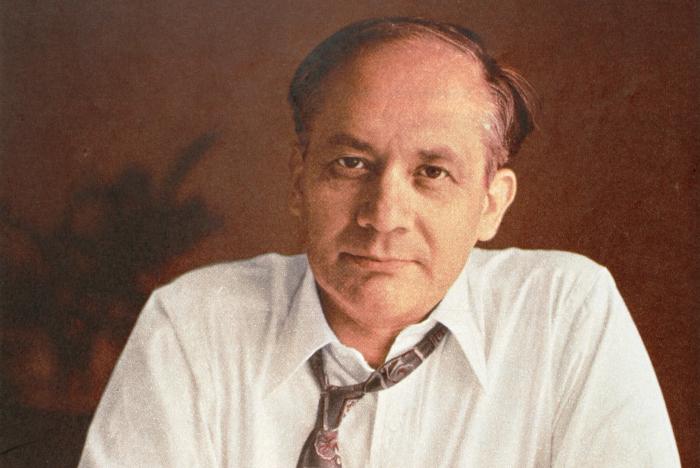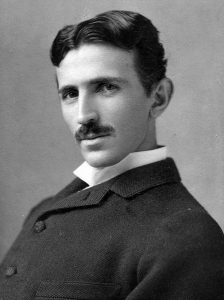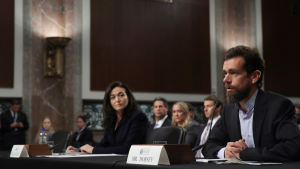
At a quiet New York cemetery in 1959, a handful of people stand around a fresh grave as a casket is lowered. Any passerby seeing the small somber ceremony might assume that the body belonged to a person of little significance. In fact, this casket carries the body of a man who is responsible for one of the largest shifts in international law in human history. Without his efforts, it is likely that the gravest crime mankind has ever committed and continues to commit would still be a crime without a name.
By the end of World War II, the Nazi regime had orchestrated the murder of over 17 million civilians in concentration camps throughout Europe. 1 Despite these egregious atrocities, no one at the time referred to the Holocaust as an act of genocide, not because it was not an appropriate descriptor, but because Raphael Lemkin had not yet coined the word and defined the crime for the world. The outcome of his personal crusade to encode ‘Genocide’ in an internationally recognized and binding Convention to which the US would sign on became his legacy (the US signed on decades after his passing).
Lemkin was born to a Polish-Jewish family in 1900 in a small village called Bezwodne in what was then The Russian Empire. Home schooled by his mother, he proved to be a brilliant scholar. By the time he received his undergraduate degree from Jan Kazimierz University he had learned over 14 languages and showed strong aptitude and interest in international law. After a career as a prosecutor in Poland, he was forced to flee to Sweden to evade capture by the Nazi forces in 1939. However 49 of his relatives were tortured and/or killed, drops in the ocean of inhumanity that was the Holocaust. 2

After fleeing the Nazi invasion, Lemkin eventually made his way to the United States. There he became a prolific professor, lecturing at the law school at Duke University in 1941 and the School of Military Government at the University of Virginia in 1942. He also served as an adviser to the United States War Department specializing in international law. 3
The world first became aware of Lemkin’s concept of genocide after the publication of what would arguably be his most important work, Axis Rule in Occupied Europe, in 1944. Primarily a legal analysis of the behavior of Nazi Germany in occupied territories during World War 2, the book also contained a full definition of the crime Lemkin dubbed “genocide.” 4 After this publication, Lemkin dedicated the rest of his life to getting the international community to acknowledge genocide as a crime under international law.
Lemkin drafted a resolution for a treaty which would officially ban genocide under international law. He then took his resolution on the road, presenting it to any nation which would hear him, hoping to garner enough support to endorse a convention on the subject. After years of lobbying the international community, The United States UN delegation agreed to present Lemkin’s resolution to the General Assembly. Dubbed “The Convention on the Prevention and Punishment of the Crime of Genocide,” the resolution was adopted on December 9th, 1948. It would be another 3 years before enough countries signed on the the convention to make it enforceable. Much to Lemkin’s dismay, The United States was not one of the first 20 signatories. 5

Lemkin dedicated the rest of his life to lobbying those nations which had not yet signed onto the convention, with the United States being his primary target. He invested every moment of his time and every cent of his modest wealth to landing that particular white whale. He eventually died of a heart attack, impoverished, unemployed, and underappreciated, in 1959. His funeral was a small affair, reportedly only attended by 7 people. 6 Yet, today, the is no Law School, no class that teaches Human Rights, nor any conversation of World War II and any of the subsequent Genocides that does not mention his name. More importantly, the Convention provided some tools to prevent or punish such cases.
The greater legacy of his life’s work would not be realized until several decades after Lemkin’s death. The United States would eventually sign the Genocide Convention, but not until 1988. The international community would eventually convict a man of the crime Lemkin coined, but not until the International Criminal Tribunal for Rwanda in 1998 which found Jean-Paul Akayesu guilty of the Rwandan genocide. Three years after that, Radislav Krstic was similarly convicted for the murder of 8,000 Bosnian Muslims in Yugoslavia. 7 Though he died nearly 40 years too early to see the fruits of his labor truly flourish, we can hope that his soul finds solace in the fact that, thanks to him, these heinous actions have a name and are viewed the world over as being among the worst crimes humanity has ever known. Eradicating the crime of genocide still eludes us but at least accountability is now more widespread around the world. 8
- Donald Niewyk and Francis R. Nicosia, The Columbia Guide to the Holocaust (New York: Columbia University, 2000), 43. ↵
- Raphael Lemkin and Donna-Lee Frieze, Totally Unofficial: The Autobiography of Raphael Lemkin (New Haven: Yale University Press, 2013). ↵
- Robert Bliwise, “The Man Who Criminalized Genocide,” Duke Magazine, November 14, 2013, http://dukemagazine.duke.edu/article/man-who-criminalized-genocide . ↵
- Rafael Lemkin, Axis Rule in Occupied Europe: Laws of Occupation, Analysis of Government, Proposals for Redress, (Washington D.C.: Carnegie Endowment for International Peace, Department of International Law, 1944) pg. 79. ↵
- Raphael Lemkin and Donna-Lee Frieze, Totally Unofficial: The Autobiography of Raphael Lemkin (New Haven: Yale University Press, 2013). ↵
- Jay Winter, “Prophet Without Honors” The Chronicle, June 3, 2013, https://www.chronicle.com/article/Raphael-Lemkin-a-Prophet/139515 . ↵
- Robert Bliwise, “The Man Who Criminalized Genocide,” Duke Magazine, November 14, 2013, http://dukemagazine.duke.edu/article/man-who-criminalized-genocide . ↵
- United Nations, “Convention on the Prevention and Punishment of the Crime of Genocide,” United Nations Treaty Collection, 78:1, 1021 (9 December 1948), New York: United Nations, 1951, 278-311. ↵



196 comments
Analyssa Garcia
Hi Matthew, excellent work. This was a very interesting and much-needed read. Raphael Lemkin’s coining of the term ‘genocide’ is so important to know and learn about. Unfortunately, it is not surprising that there is no class or mentioning, or law school named after him considering the way people “cared” about him while he was alive. I’m sure this work he did was not easy, but hopefully he knows how far it has come. Thanks for sharing.
Jacqueline Galvan
This author does an excellent job of depicting the fantastic job that Raphael Lemkin did in coining “genocide”. This is an extremely important term to hold terrorists and. dictators accountable, and without his work, their crimes would go much unnoticed. It saddens me that he never got to see his life’s work come to fruition, but we should be forever grateful for all he did.
Alejandra Pardo
Great article Wyatt! I wasn’t aware that there wasn’t a prior term until the mid-1900s for genocide. It is amazing that there was no such word or policy in place to protect people from genocide. Although Lemkin wasn’t able to see his accomplishments his work doesn’t go unnoticed. This article works to show how Lemkin advocated for this law to be recognized among all nations.
Maya Naik
It was interesting to read this very well-written article and learn about the perspective of someone who fled the Nazi invasion. It was moving how Lemkin was able to turn this experience around and learned how to use it to make a difference and advocate for justice. Genocide created an abundance of trauma and a harsh reality for the oppressed, and that is why people like Lemkin are able to leave such moving legacies. His ability to fight back through advocacy and devote his life to achieve justice for those who have experienced similar harsh conditions is something to admire.
Sebastian Hernandez-Soihit
This article makes me reflect on many other characters in history such as Lemkin himself who had a tremendous impact on world history but are not given the attention that they truly deserve.
These may be intellectuals or musicians and I do know of many examples, but they are a sad reality of our time for some of their names to end up becoming little more than trivia questions. This is why I appreciate the honest effort of this article to depict the life of this individual and cast light on his achievements.
cmartinez131
I really enjoyed the image painted at the start of the reading. The writer did an amazing job of immediately catching my attention and growing my curiosity. It is interesting to know that the word Genocide was not used because no one knew the implications of the word. It shows how truly horrific the holocaust was. Although the reading is not grammatically perfect, there is much to learn from this article.
Lorena Maldonado
This is a very interesting article, and I was not all aware of the history of the term genocide, but this definitely gave a lot more insight to it. I think genocide has to be one of the worst crimes committed by people and I am surprised there was not even a term for it until the mid 1900’s. It is heartbreaking how Rafael Lemkin worked so hard to make sure these atrocities did not go unnoticed only for him to not be able to see his good work. It now makes me wonder that before the term genocide was created and recognized as a crime, what they would have called it or charged them with. But overall, I am glad I was able to learn about this because it does so much for our community as a whole to recognize these types of crimes and make sure they are punished for them accordingly.
Emilee Luera
This reading has significant to history as this man named Raphael Lemkin. He flees from the matzo’s and made his way to the US. Although he went through that he helped write a treaty that would help the international law.
Karicia Gallegos
This was a very interesting article to read. The author, Matthew Wyatt did a wonderful job. What shocked me is how long it took for people to come to the realization of how terrible the Holocaust was. It’s really sad that the United States didn’t sign the Genocide Convention until several decades after Lemkin’s death. Lemkin never got to see how his hard work came together in the end.
Gaitan Martinez
I have to say that this man, Raphael Lemkin, was an outstanding person, and even if his work wasn’t recognized during his lifetime, I’m sure he knew it would get attention eventually. However, his efforts did bring more attention to the holocaust and we thank him for his work. Reminds me of Vincent Van Gough, how his art only became popular after his death.